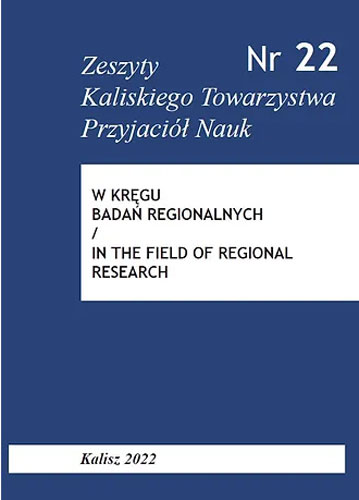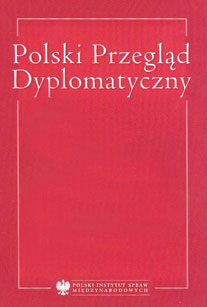

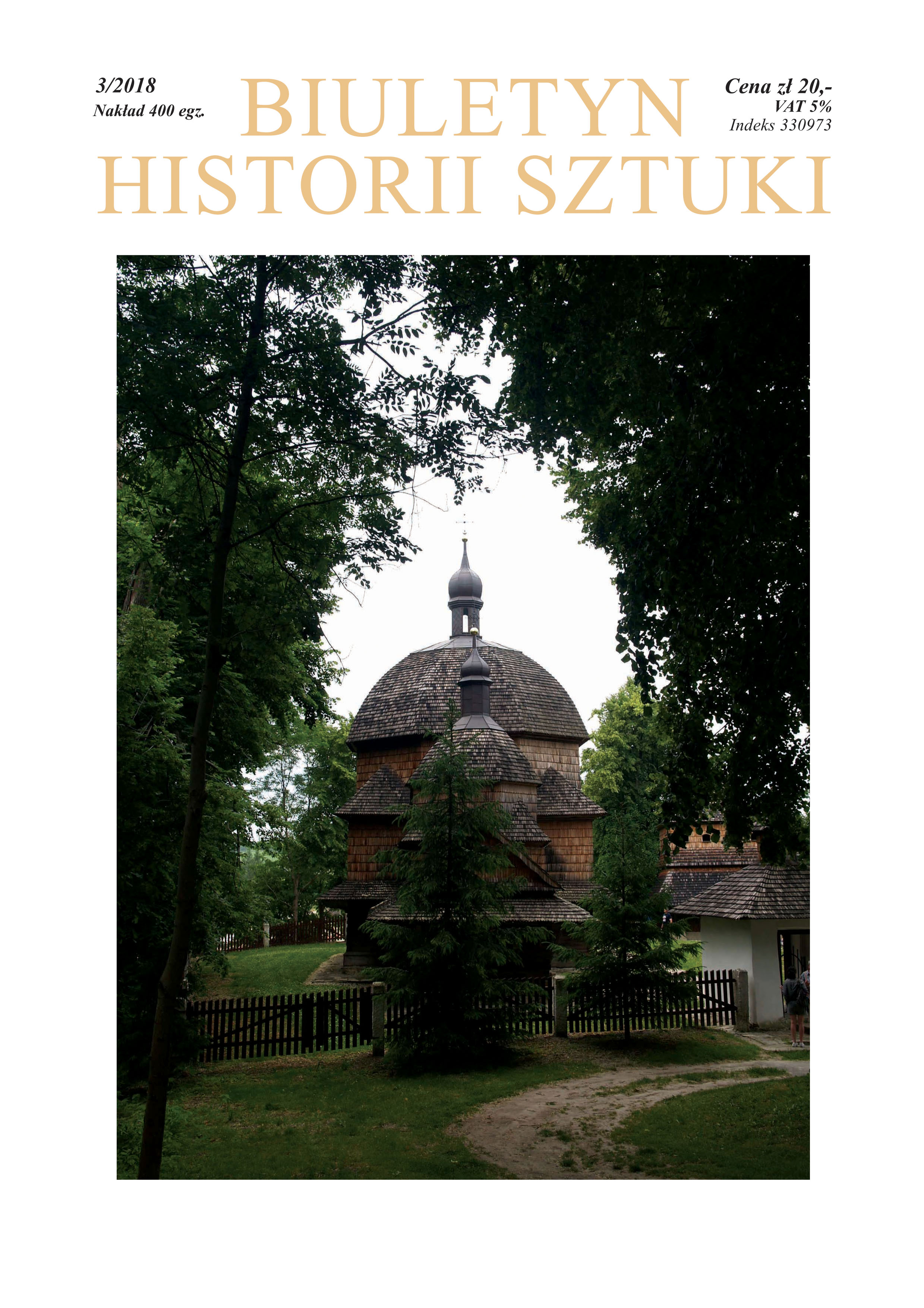
Keywords: Lubartów, St Anne’s Church Roof Structure (1733-1738); collar rafter roof with queen posts; Paolo Antonio Fontana (architect);
Queen Post Roof Structure of St Anne’s Church in Lubartów Raised in 1733-38, the Parish Church of St Anne in Lubartów, features the only as yet discovered in Poland collar rafter roof with queen posts in which element joints are strengthened with wooden wedges. The design was worked out by Paolo Antonio Fontana (1696-1765), court architect of Paweł Karol Sanguszko, Grand Marshal of Lithuania. The most accomplished work of Fontana is the Lubartów Parish Church, artistically serving as a direct model for other churches of the architect. The analysis of this unique roof structure is preceded by a selection of examples of other queen post truss solutions. The composition of the Lubartów church focuses on the three-span nave in the form of an elongated octagon, over which the above-mentioned combination of strutted collar beam with queen truss was shaped. The octagonal plan of the roof is divided into three parts: the middle one shaped as a rectangle, and two outermost trapezoidal ones. The consistent system of carpenter’s assembly marks, present only in the central section, testifies to its genuine character. Whereas the lack of these in the trapezoidal outermost parts suggests that those structures were raised later, most likely in 1880 during the roof repair. They, however, repeat the former roof framing arrangement. The central rectangular part is made up of 9 trusses: five full trusses (with queen posts) and four incomplete trusses (without queen posts). Among full trusses, there is only one incomplete truss. The trapezoidal outermost elements are made up of four trusses: one full truss and three incomplete trusses. The difference between the full trusses in the central part and in the outermost sections consists in the means of joining the queen post with the tie-beam. In the truss of the central part (before 1738), the queen posts are joined with the tie-beam by means of a tenon, strengthened by a vertical wedge, whereas in the truss of the outermost part (1880) the joint is with an iron flat bar; the use of the latter suggests a later creation of the queen post. This, however, is the only difference, since the joining of the queen posts with the straining beam and braces in both cases is the same, including the use of a horizontal wedge for sealing. Thus for this part of the 1880 truss no metal connector was introduced, but the solution from before 1738 was applied. In the further part of the article, carpenter’s assembly marks are discussed; their analysis points out to two essential observations:1. The roof assembly was begun from the central part formed on the rectangular layout, not from the beginning of the frame. This may have resulted from the octagonal frame shape. 2. In the trapezoidal outmost part one full truss was foreseen, this reconstructed in 1880, however, it was not connected with the tie-beam with a bottom wooden wedge, but with an iron flat bar.
More...
Keywords: education for safety; safety; education;
RESEARCH OBJECTIVE: The aim of the article is to establish the meaning of the more and more frequently used construct – “education for safety”, to which intuitive meanings and temporary meanings are assigned, depending on the context of use and being included in a given frame of reference. “Education for safety” can mean anything, causing a troublesome ambiguity or nothing, which limits the possibility of understanding its within the circles concerned. THE RESEARCH PROBLEM AND METHODS: The main research problem is contained in the question: What is “education for safety” in contemporary pedagogy? The research method is the analysis the subject literature, legal acts and the activities of the Education for Safety Association of the Polish Academy of Sciences. THE PROCESS OF ARGUMENTATION: Based on the analysis, three semantic horizons (preconceptualization) of “education for safety” were distinguished and characterised. RESEARCH RESULTS: The analysis shows that “education for safety” can now be understood in pedagogy as: (1) lifelong educational practice, (2) school subject and (3) research subject. The semantic horizons are also possible conceptualisations of “education for safety” in the future. CONCLUSIONS, INNOVATIONS, AND RECOMMENDATIONS: The coexistence of the preconceptualizations indicated here favours their mutual interactions supporting further development, which leads to the emergence of a new subdiscipline – pedagogy of safety. Safety is under dynamic changes and does not have a constant level of organization, therefore “education for safety” should be treated as a lifelong process, a component of the idea of life long learning. In “education for safety” as a school subject, the content of civil safety dominates, and this subject is treated as secondary in schools. In the pedagogical discourse, “education for security” more and more often replaces “education for peace”.
More...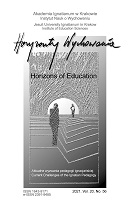
Keywords: accompaniment; active social and educational; mediated communication; Ignatian pedagogy; pedagogy of accompaniment;
RESEARCH OBJECTIVE: The work reflects on the process of accompaniment during the COVID-19 pandemic in Poland in the context of social and educational activity of retired prisoners. THE RESEARCH PROBLEM AND METHODS: The leading research problem is the question: what is the importance of accompanying and being in the community during the COVID-19 pandemic for retired Prison Service officers? THE PROCESS OF ARGUMENTATION: The first part contains an introduction to the main considerations, and a detailed description of the research methodology, as well. In the second part an attempt was undertaken to describe the categories of the accompaniment from a pedagogical perspective and from the perspective of activities undertaken by retired prison officers. In the third part, the phenomenon of the COVID-19 pandemic was analyzed. The negative and positive effects of the pandemic in the context of the daily functioning of KZEIRSW were discussed. The fourth part describes the strategies and solutions undertaken by the retired prison officers which enabled to overcome the negative and psychological consequences of the pandemic. The last fragment of the publication is a summary containing the scientific conclusions. RESEARCH RESULTS : The analysis show that the time of the COVID-19 pandemic is treated by retired prison officers in terms of a difficult situation, and a specific time of accompaniment, as well. CONCLUSIONS, INNOVATIONS AND RECOMMENDATIONS: Research based on the experiences of the last two years shows the legitimacy of choosing the online form of education and communication. This form gives participants the opportunity to be together and work despite the current difficult situation related to the pandemic. For the retired prison officers taking part in the educational „the Academia RetroC@fe” project was a challenge for many retired prison officers from KZEIRSW, and it initially aroused hesitation and fear.
More...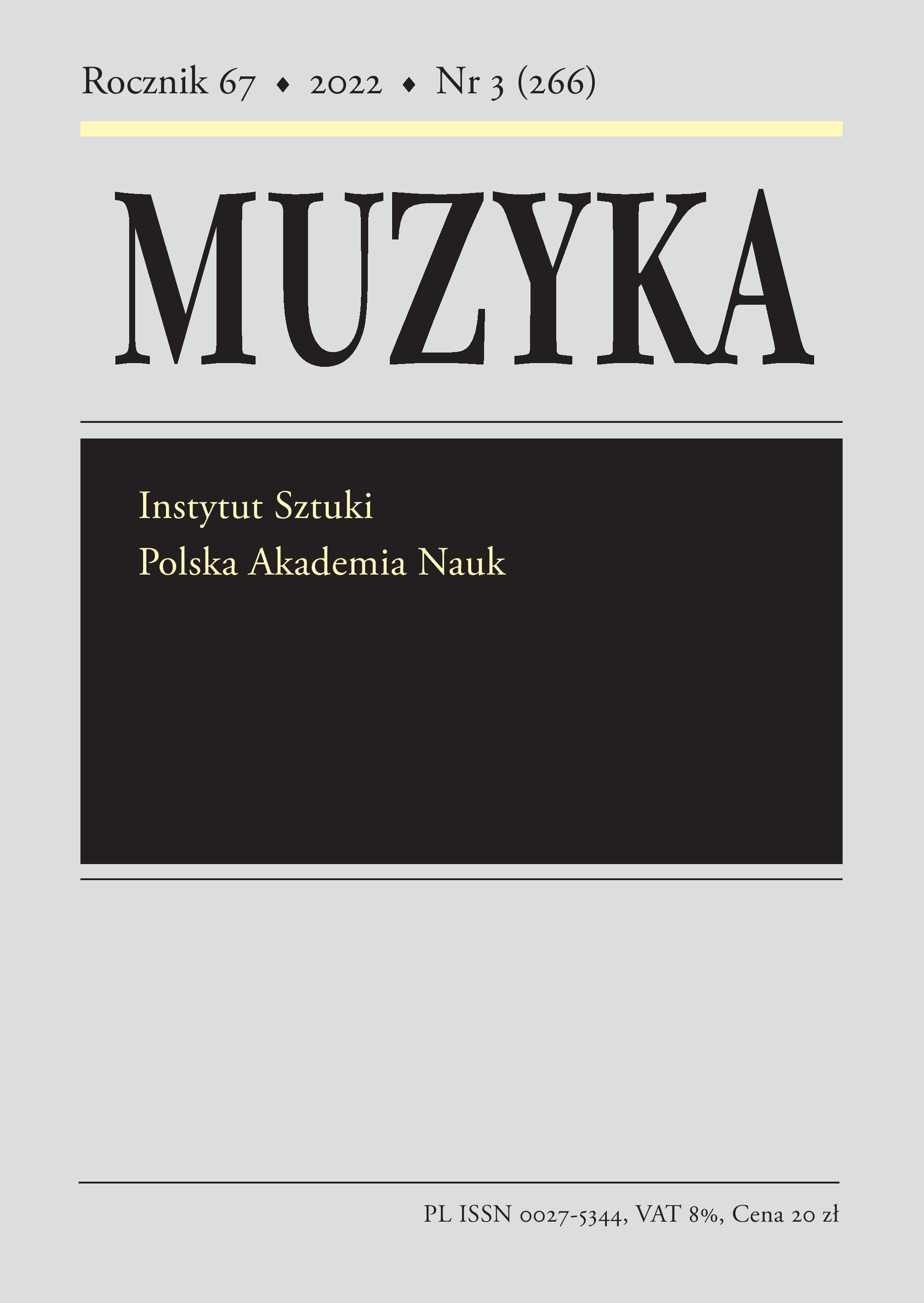
Polish satirical discourse related to the figure and activity of Ignacy Jan Paderewski was present in the Polish satirical press from the moment when he began to notch up great successes as a pianist until the time when his political activity eventually ceased. The press materials on this topic, collected for the needs of this paper, come from the years 1898–1936. They are literary texts (anecdotes, poems, and mini-dialogues) as well as iconography (caricatures and cartoons) appearing in press titles that represent three main centres in Poland under the Partitions: Warsaw, Lwów (now Lviv), and Poznań. The materials mostly come from three Warsaw magazines (‘Mucha’, ‘Kurier Świąteczny’, ‘Kolce’), Lwów’s ‘Szczutek’, and Poznań’s Bocian. This source material has been submitted to multifaceted analyses, focusing first and foremost on deciphering allusions to current historical events. These contents, presented in sometimes radically different ways by the individual magazines, depending on their political bias, substantially complement Paderewski’s official biography, while at the same time reflecting the diverse attitudes of the Polish society (represented here by the satirists) towards these events. Thanks to the vigilance and uncompromising approach of contributors to satirical magazines, we can get behind the scenes of such episodes from Paderewski’s life as the celebrations at Grunwald (Tannenberg), participation in the Paris Peace Conference and the League of Nations, his one-year tenure as Poland’s Prime Minister, contacts with the Polish community in the US, establishment of the Rzeczpospolita daily, and successive attempts to regain political power in the 1930s. The paper’s other aim is to characterise the overall character of the collected material from the perspective of image studies, with a discussion of the manner in which Paderewski is represented in caricatures created by Bogdan Nowakowski, Zygmunt Kurczyński, Kazimierz Grus, Antoni Romanowicz, Bronisław Fedyszyn, and several anonymous authors.
More...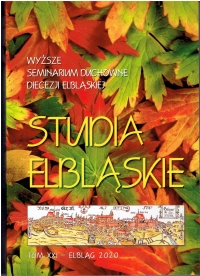
Keywords: reliquary chapel; oratorio; Frombork; Diocese of Warmia; Bishop Krzysztof Andrzej Jan Szembek; square; polychrome; Maciej Jan Meyer
A chapel under the invocation of the Most Holy Saviour and St. Theodore the Martyr (Theodor of Amasea), known as Szembek Chapel was founded by the Bishop of Warmia, Krzysztof Andrzej Jan Szembek of Słupów (1680 – 1740), a bishop of Warmia in 1724 – 1740. The oratory is an example of a central dome structure. It was established as a reliquary chapel and a burial place for its founder. The central point of the chapel is the reliquary reredos,placed in the southern arcade in 1734. On the altar mensa there is a sarcophagus with visors and silver applications with the relics of St. Theodore of Amasea. It is accompanied by numerous relics of various saints and Agnus Dei of wax placed in black, wooden, glass reliquaries, richly decorated with trimmed silver applications. Their silver fittings and decorations were made in the years 1730 – 1743 by a goldsmith from Olsztyn – Jan Krzysztof Geese (†1761) and Samuel Grewe (1712 – 1750), a goldsmith from Królewiec. The entire interior of the chapel is covered with frescoes made around 1735 by Maciej Jan Meyer (Matthias Johann Meyer) from Lidzbark Warmiński. The artist decorated the pilasters, friezes and panelsof the chapel’s walls with forms of marbling and regency ornamentation. In the corners of the chapel there are four pairs of pilasters. For every pair, between the pilasters, there are medallions with busts of saints. Additionally, in the arcade above the entrance to the oratory, Meyer portrayed a monumental Vision of St. Theodore of Amasea. In the arches of the arcades, hepresented personifications of eight blessings, painted in the en grisaille technique. Finally, in the the dome of the chapel one can admire adoration of the Holy Trinity and the Holy Cross by the inhabitants of Heaven, led by the Assumed Virgin Mary. The painting decoration of Szembek Chapel, rich in ideological content, is an early example of Polish quadrature illusionist painting that draws abundantly from the Italian painting tradition inspired by Andrea Pozzo (1642 – 1709). Educated in Italy, Meyer, while composing the dome decorations, drew inspiration from frescoes from the years 1664 – 1665 by Pietro Berrettini da Cortona in the dome of Santa Maria in Valicella in Rome. In case of the arragmenet of the painted medallions with busts that can be found in the lower part of the chapel, Meyer was influenced bya solution used in the side axes of the main altar from the years 1699 – 1700 in the Church of the Holy Cross in Warsaw funded by Meyer’s patron, Bishop Teodor Potocki, a direct predecessor of Bishop Szembek of Warmia.
More...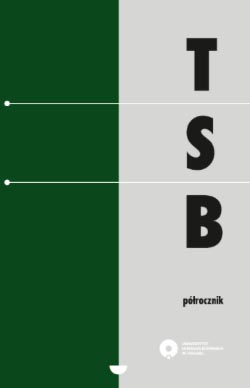
Keywords: WIAD; WIAD21; scientific conference; UX; information architecture
This article is a report from the international scientific conference WIAD21, which took place on February 27, 2021, on the occasion of the World Information Architecture Day. The conference was organized at the Institute of Information and Communication Research, at the Nicolaus Copernicus University in Toruń. In total, 250 people participated in the conference, including 45 speakers, both from the world of science and business.
More...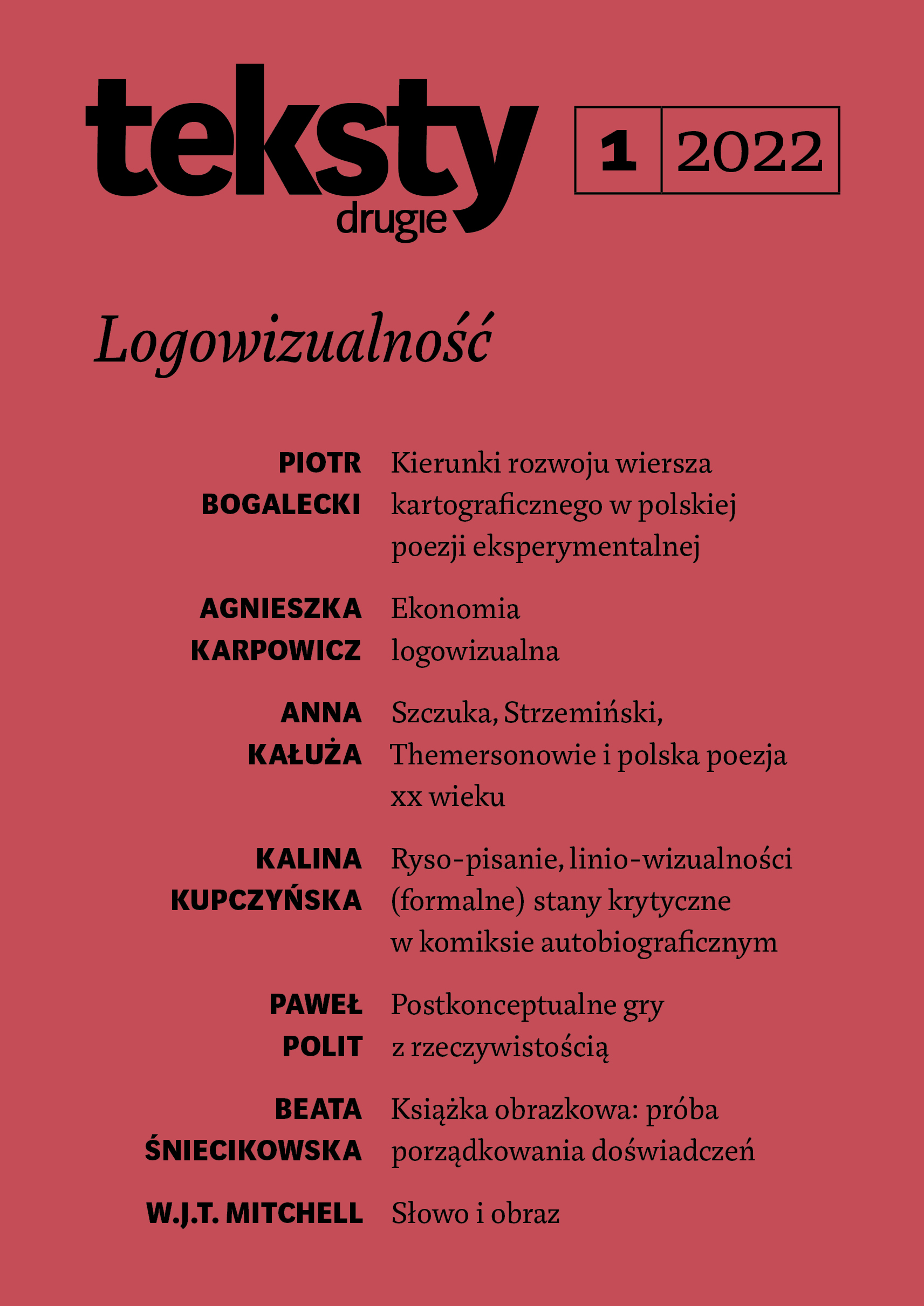
Keywords: logovisuality; vaporwave; ZUSwave; online aesthetics;
This article analyzes digital logovisual compositions created for the online projectZUSwave by the group Rozdzielczość Chleba (Bread Resolution). The source materialconsists of digital collages, memes, and posts from the first half of 2015 on the group’sFacebook profile, a special issue of the zine Nośnik (Driver) and the poetic algorithm“Prokom” by Leszek Onak. The text focuses on the reading of ZUSwave – which to Poland’sSocial Insurance Institution (ZUS) – as a local critical parody of the popular vaporwaveaesthetic. Chorzewska argues that in the ZUSwave project, digital logovisuality becomesa vehicle for political discussion, opposition, and diagnosis of crisis – both in the sphereof leftist imagination and belief in the emancipatory dimension of technology.
More...
Keywords: arts education; art; theater; theater pedagogy;
The movement of theater pedagogy has been present in polish practice for a couple years. Through efforts of institutions like The Theater Institute in Warsaw or Theater Pedagogues’ Association, it is possible to observe the development and gradual change of approach towards the form of contact with theater. The aim of this article is to present the theater pedagogy as an interdisciplinary area of research combining both artistic and educational practices, including its sources, domestic history and basic premises. Through references to ideas of aesthetic upbringing and pointing out differences between traditional theater education and theater pedagogy, one can define it and understand its phenomenon. Additionally, it is important to underline the potential in activities being conducted according to rules of theater pedagogy.
More...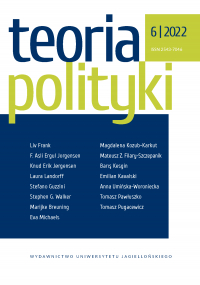
Keywords: classical realism; neorealism; neoclassical realism; analyticism; ideal types of states; extraction capability; power; sources of power; foreign policy behaviour;
This paper aims at problematizing this distinction between status quo and revisionist/imperialist states by creating a typology of four kind of states: imperialist, status quo, young and old narcist state. The text will proceed in three sections that: 1) problematises the contemporary realist theorising; 2) reconstructs Morgenthau’s notions of sources of national and political power, ideal types of foreign policy and the character of political community and its interest; 3) presents the four ideal types of states. This typology, based on analyticist metatheory and deeply inspired by Hans Morgenthau’s thought, aims at solving problems with neorealist, and neoclassical realist theorising. Based on such non-positivist metatheory, and thus closer to the classical realist roots, it omits the offensive/defensive neorealist assumption about states motivation. By explicitly combining the three historically bound qualities of states –their sources of national power, extraction capability and foreign policy behaviour it transcends the problems with weak causal linkages between state level variables present in neoclassical realism. Hence, it exemplifies the approach to general theory-building that is practically viable for explicitly exerting normative judgement, also from the perspective non great power state actors – the consistent weakness of mainstream, contemporary realist theorising.
More...
Keywords: Foreign Policy Analysis; foreign policy theories; Poland; Central Europe; historiography;
The purpose of this paper is to characterize Foreign Policy Analysis (FPA) in post-Cold War Poland. The scope of this text is limited to FPA, understood as empirical research utilizing foreign policy theories by taking into account factors at the domestic level. “Polish FPA”is defined as research conducted by scholars employed in Poland. The text focuses on five aspects of Polish FPA: (1) historical context, (2) the teaching covering this subject, (3) the development of institutions doing research on foreign policy, (4) adaptation of ideas from global (mainly Western) science (in fact, westernization), and (5) the most important publications analyzing foreign policy and applying theoretical approaches. The paper is a response to the existing research gap as, so far, no work has been prepared strictly on the FPA’s development in post-Cold War Poland. The weaknesses of the existing literature on this subject are its (1) selectivity, (2) focus on mainstream international relations theories and (3) sketchiness.
More...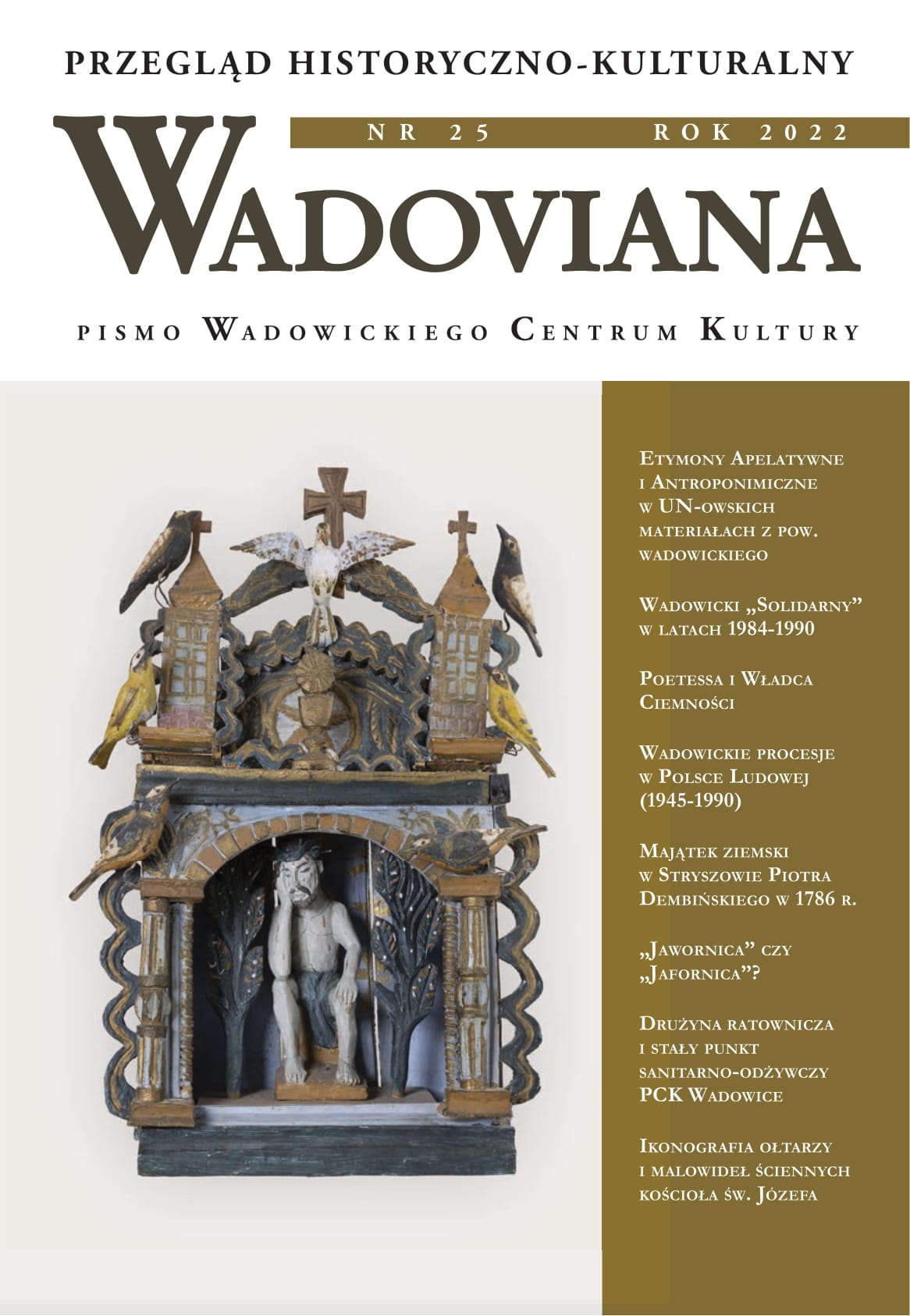
Keywords: iconography;Wadowice;Carmel;Carmelites;monastery;saints;blessed;God's servants,altars;paintings;images;
This article concerns the iconography of the interior of the church located at the Monastery of Discalced Carmelites in Wadowice. It discusses individual images found on the altars and on the wall paintings in this temple. It presents a wealth of iconographic and biographical content hidden behind the representations of saints, blesseds and servants of God related to the history and spirituality of Carmel.
More...Keywords: crisis management; resolution; restructuring and orderly liquidation; bankruptcy; forced restructuring;
The analysis of the crisis management system in the insurance sector shows that it is necessary to strengthen it. The most important missing elements are the broad powers of public authorities, the sources of financing of anti-crisis measures, as well as the principles of international cooperation in times of crisis. The answer to the identified deficiencies is the resolution procedure, the introduction of which is planned in the EU, which is in line with international recommendations. The necessary ele- ments of the resolution system in the insurance sector include: appointment of resolution authorities, providing resolution authorities with a wide scope of powers ensuring the possibility of implementing resolution tools, the obligation to prepare resolution plans, establishing a resolution financing frame- work and establishing a cross-border crisis management framework. The introduction of a resolution framework will, however, involve many challenges at the stage of its agreement at the EU level, creat- ing a resolution framework at the national level and as part of preparing insurers to extend the scope of competences of the financial safety net.
More...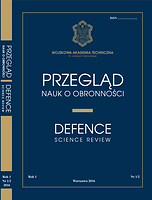
Keywords: safe place; security; anti-terrorism; safety;
Report Safe Place Congress 2021
More...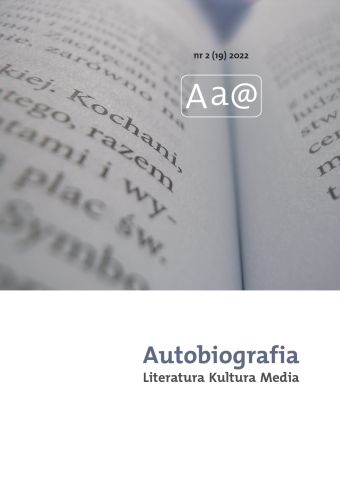
Keywords: Ewa Zarzycka; performance; transmediality; autobiography; audiobiography
The article is an attempt to describe the work of Polish performer Ewa Zarzycka in the perspective of trasmedia autobiographical artistic practices. The metaphor of ‘circumlocution’ in the title of the article captures the specific perifrastic peculiarities of Zarzycka’s performances and texts, that constantly ‘circulate in the orbit’ of the language around notions of art, the artistic situation and the artist’s life. Most of all, the objects of interpretation in the article are ‘spoken performances’, ‘written drawings’ and notebooks, authored by Ewa Zarzycka, as various artistic practices that are connected by narrative and autobiographical quality, related in a specific way to the corporeality of voice and handwriting in transmedia ‘circulation’ between writing, sound and picture.
More...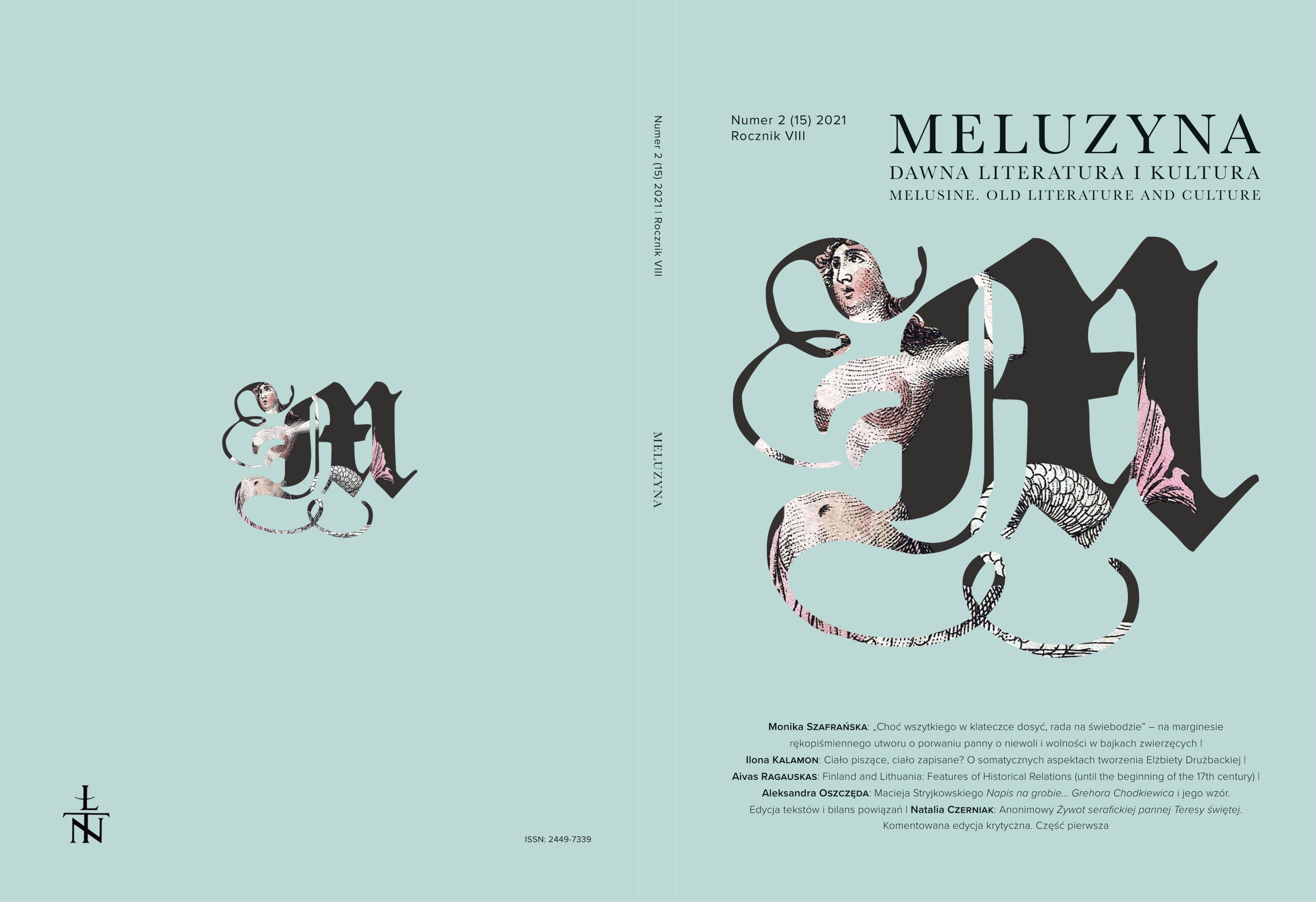
Keywords: Carmelites Discalced; saint Teresa of Ávila; critical edition; religious engraving
This paper presents the critical edition of lyrical biography of saint Teresa of Ávila. The text of the anonymous author is based on the engravings taken from Rime sopra la vita di santa Teresa published in Italy in 1670. The commentaries explain meaning of Old-Polish words as well as proverbs, the biblical quotes and references to the writings of saint Teresa: her autobiography and Spiritaul Testimonies. Moreover, this article describes the role of engravings in the Carmelites Discalced nuns’ religious life. The aim of the article is to present the critical edition of lyrical biography of saint Teresa of Ávila. The text of the anonymous author is based on the engravings taken from “Rime sopra lavita di santa Teresa” published in Italy in 1670. The commentaries explain meaning of Old-Polishwords as well as proverbs, the biblical quotes and references to the writings of saint Teresa: her autobiography and “Spiritual Testimonies”. The article describes also the role of engravings in the Carmelites Discalced nuns’ religious life.
More...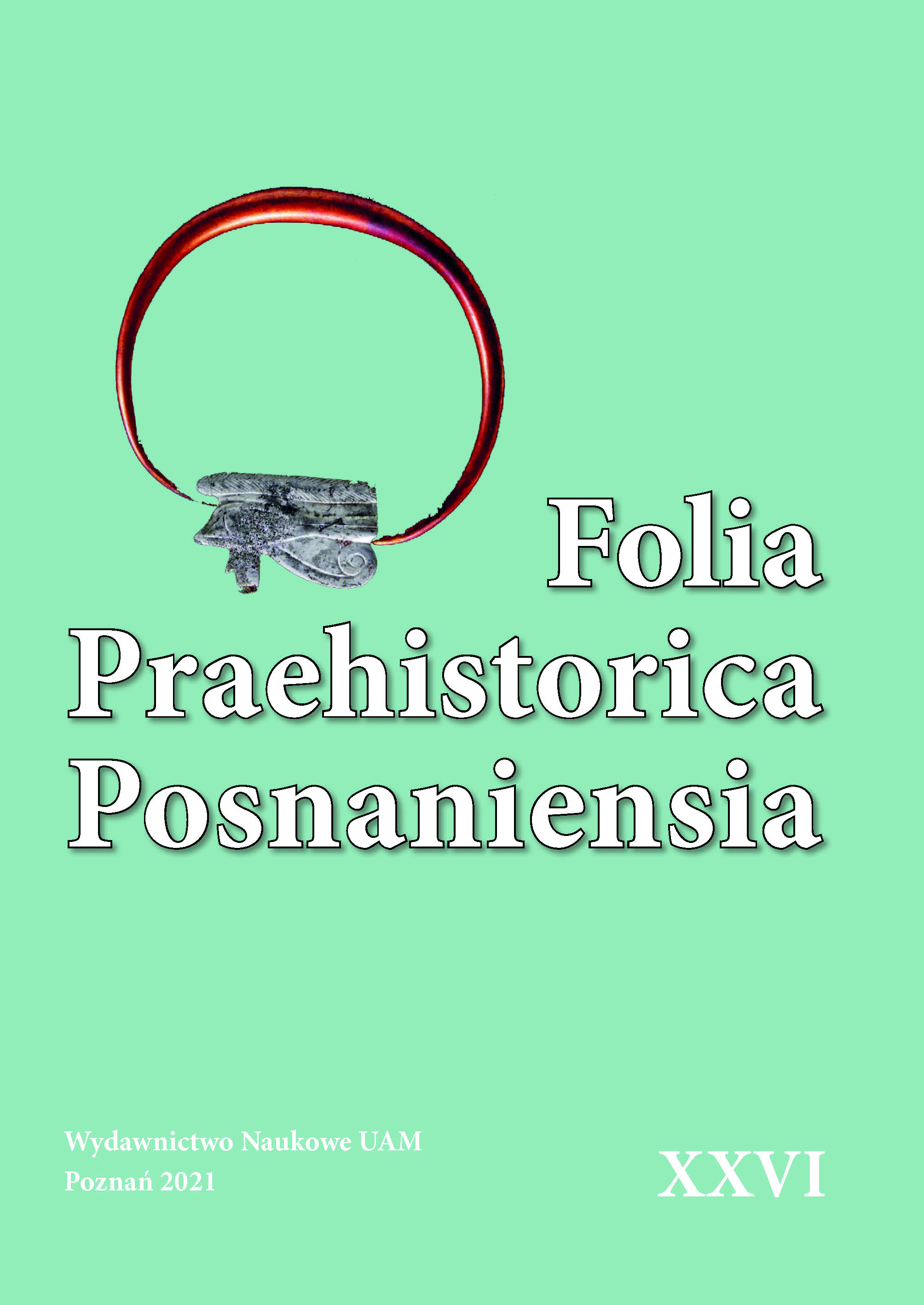
Keywords: Construction ceramics; profiled brick; brickmaking craftsmanship; production traces; the city parish church of St. Mary Magdalene
Medieval profiled bricks from the remains of the city parish church of St. Mary Magdalene in Poznań are a very important source of information about the brickmaking craftsmanship. The study attempts to identify production traces with specific stages of brick production (the process of forming and drying bricks), along with an attempt to reconstruct these operations that were used by the Poznań brickmakers. In addition to the analyzes related to the number of occurrences, the type of research material was defined, the criteria for isolating individual traces were described, the state of knowledge about brickmaking and analogies of fittings found in medieval buildings, mainly in the city of Poznań, were taken into account.
More...
Keywords: education; competences; school; student; challenges;
Competences are an indispensable resource of an individual, the development of which is particularly important in the era of changes taking place in the modern world. The developing reality poses many life and professional challenges, the solution of which may affect the life trajectory of an individual. Material and methods: The article is a review. Results: It discusses the issue of competences, which constitute an indispensable resource of an individual to function effectively in the world of liquid modernity. In the work, the author referred to the place of secondary socialization – school, as well as the barriers that appear in relation to the acquisition and development of competences. Conclusions: A particularly important point of reference is the youth of secondary schools who are in transition between the education system and the labor market.
More...
Keywords: exegesis; Eliade; Polish reception; hermeneutics;
The first text related to the Eliade's book «Ordeal by Labyrinth» appeared in Poland in 1989, it was an essay titled «Between chance and necessity. Life as an ordeal by labyrinth» (Miedzy przypadkiem a koniecznością. Życie jako prñba labiryntu) signed by Ireneusz Kania. The Polish exeget wanted to pay attention of the reader to two things: the first one was the specific way in which Eliade looks at his way of life. The second thing was a philosophical attitude of Eliade with a priori character that gives meaning to the methodology used in his scientific research, called antireductionism. In 1992 appears a review written by Andrzej Miś in the magazine «Przegląd Filozoficzny-Nowa Seria». Here the Polish philosopher makes three main remarks: that hermeneutical researches can and should have critical and demystified functions, about the presence of the sacred in contemporary culture. The third remark made by Miś refers to old mythical images that disappeared, not because they have been forgotten but for various objective reasons.
More...